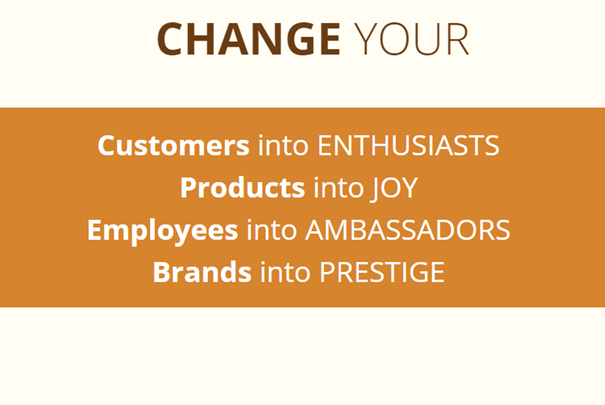He has long been involved in the creation of customer experience management strategies and their implementation in the life of companies in Slovakia, the Czech Republic and globally. He likes to combine the results of basic research in human sciences, especially psychology, with modern trends in the industry. His favourite topics are the introduction of innovation, changing company culture and managing and implementing strategic change. We talk to specialist Jan Urigo, Anodius, Inc. about how to set and improve strategy in customer experience.
Having spoken to many companies, it has been our experience that companies don’t know exactly what they mean by systematic CX management.
CX stands for Customer Experience. Customer is a customer, both internal and external. Experience can be both an experience and an experience. Customer Experience measures the interaction between the customer and the service or product provider, lasting throughout their relationship.

What about the abbreviation EX? What role do service providers play as employees in managing the customer experience?
To borrow a favourite quote from Simon Sinek, your customers will only start to love your company if your employees love it first.
Imagine you walk into a restaurant and the staff is having a bad day. They don’t have the right attitude towards their work and then even a great beer on tap or a well-done steak tastes somehow less good. Or you call the call-centre and from the voice that connects you you immediately know that you are annoying. Or you come to the institution behind the window and find you’re in the wrong place at the wrong time. In all three cases, the overall impression is spoiled.
That’s why EX is very important – it’s basically the beginning of the CX story. When we mess up the beginning, the rest is difficult and expensive to fix later.
This is confirmed by statistics in Europe – up to 33% of people are able to change brands on the basis of one bad experience, with the most common reason for leaving being a bad attitude of the employee.
Is there a sector or industry where CX management is irrelevant?
CX makes sense wherever there is human-to-human contact. I can’t think of any interaction where the human is alone. That’s why Customer Experience is a social phenomenon. It’s about interactions, contacts, relationships, and we as social personalities depend on them. It is a strong predictor of success, as each person can judge the level of CX.
In our region, unfortunately, it is only after several decades that we are discovering the method of design thinking – involving the customer in the creation of a product or service from the very beginning. And it is the companies that last for centuries that create a product with the customer and for the customer. That’s why they can never go wrong.
If the company is bigger, they are already setting up entire CX teams. In our country, it’s not exactly common. To what size can a company manage to work strategically with CX without allocating special resources?
I’m not a fan of calling departments Customer Experience units. I prefer a setup where every single employee has a clear indication of what they are responsible for in the organization. And it doesn’t matter how big the company is. At the same time, it’s important to teach people to ask the question – Will what I do be appreciated by the client, our customer? Will they be willing to pay for it? Will he be willing to come back? Those are the three basic assumptions that make sense.
There are companies that see their customer once in a lifetime. For example, roofing dealers selling through a network of partners. Should they also address the topic of customer experience?
We all know the feeling when we want to unlock our phone and the display says: “You only have one more try”. Even business people know they have that one shot and they can’t mess it up. Which means their CX has to be a beautiful, sophisticated, unique, attractive and memorable experience. But this CX is not “sold” by the company itself, but by its customers. If you shopped with them 5 years ago and I’m looking around for similar merchandise today, let me ask you. And if you advise me to go for it, I’ll be happy to buy.
In fact, it’s nothing new that companies are trying to make their customers happy, to have a positive relationship with them. But how is CX different to the past?
The difference is in several things. The first is practice – designing and repairing the relationship between the customer and the brand. The way it has worked so far has been – we build something, sell it, and maintain it over time. Today’s CX management is about empathetic listening, correct interpretation and quickly fixing friction points with the customer.
This is the 2.0 level that companies are currently chasing clients into CRM. The problem is not if the firm gets something wrong in the customer connection. The problem is if it takes a long time to fix it.
Thus, CX management is a systematic process to make it sustainable and measurable. But there are different KPI’s in every company – turnover, margins, market share and so on. What are the best metrics to measure CX?
Within CX, I recommend focusing on the pyramid of metrics.
At the bottom, we measure whether the expectations the customer came in with have been met. It’s called Goal Completion Rate, or the rate of fulfillment of a basic need – Did I get what I wanted? A notch above that is a metric called the Customer Effort Score – the effort I have to put in to get what I want. For example, to translate a contract, or file a complaint, or possibly buy a product – how long did it take me? 40 clicks or seven different passwords that we don’t remember? That can frustrate a person, they don’t want to do it again, and then they tell everybody. This second level gives the cue to simplify. Buying and managing any product or service should be simple.

The third in order is metrics – what was the experience like? How did it “smell”? That is, overall satisfaction. But it also means whether, for example, the price will spoil the experience for me. Paying €8 for a great beer will bring out a sour taste and many of us will say, “That’s a lot”…
Only fourth in order is the metric used by the vast majority of companies. And that’s the Net Promoter Score – asking the customer if they would recommend the service or product further. Most companies ask this as the first question, it’s like hidden advertising. But after every even fleeting “touch” with a company, it’s annoying to the customer. Moreover, an answer on a scale of 1 to 10 will not give the firm a comprehensive opinion without finding out the additional questions mentioned above.
But these four metrics are quite sufficient to measure CX.
What does putting such metrics into practice look like in building a good CX?
Each metric has its place at a certain point in the customer journey. For example, the car configurator – after completing it, we’re asked how easy it was. This is valuable feedback for configurator developers. After buying the car, the customer is waiting for the first service visit. It has to be booked, get there, get or not get a replacement car, wait a short or long time, and at the end the same question is asked – How easy was it? This feedback is only given to the team that takes care of the service. That is, every customer journey gives feedback on how well the staff are doing their job.
What do clients in the CX space ask for most, and where do they get advice?
The topic of customer experience is gradually gaining not only more theoretical but also practical attention. It is still important to help companies understand CX properly and then connect it to operations and day-to-day operations. Clients have the greatest need to learn the methodology of appropriate metrics. We then address how to connect the data to decision making in the firm. But the biggest impact is on innovation activities. CX in companies causes a positive hype through customer feedback while creating internal needs to change and improve things.
How do companies manage to implement changes?
Every organization in the CX space is already doing something, they’ve just called it something different so far. Yet caution prevails as going to market with skin in the game and directly confronting the customer is a commitment. Gradually, internal collaboration models are being sought. Separate structures are being shaken to their foundations with CX programmes, as it makes no sense to dig into IT or campaigns without context.
A word in conclusion?
Don’t be afraid to innovate, don’t be afraid to change, but most importantly, be closely connected to the customer. We can only have a relationship with the customer if we can be close to them. We – as Anodius – are people who work in this area. We will teach your company how to find its way to your customer and how to like each other. A lot of companies are afraid of that emotion. They build a business on rationality, on price or quality. But all business is about relationships, and as long as we understand people, we can do business that will not only make a profit, but also make us happy.
Interested in finding out how far along your company is in building CX?
Test yourself in our questionnaire.
Interested in talking about how to improve CX in your company?
Choose a date that works for you.








